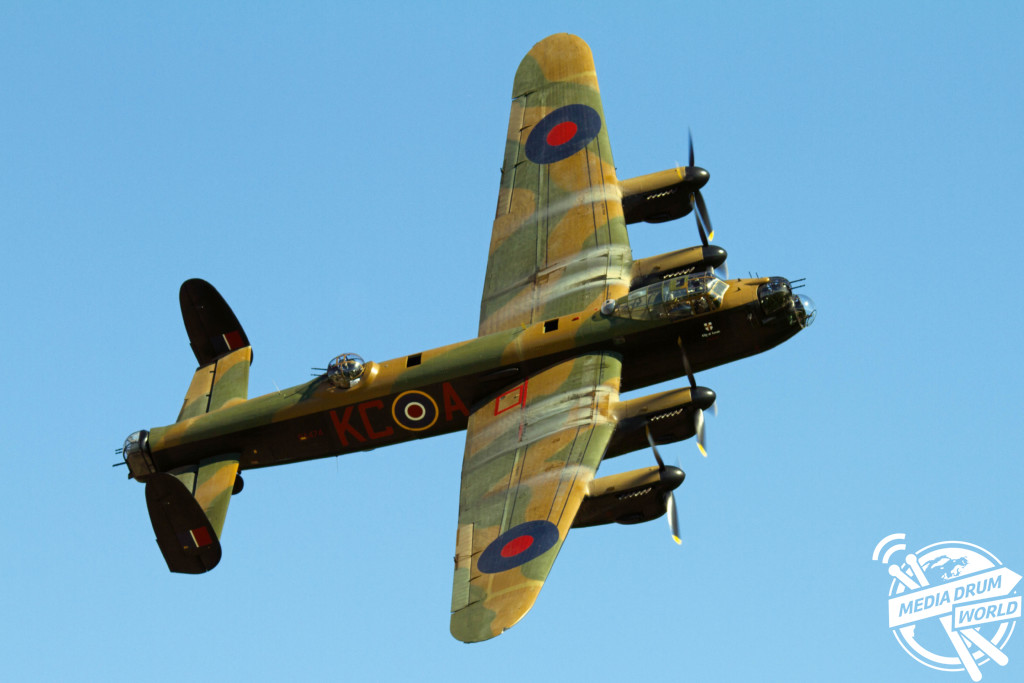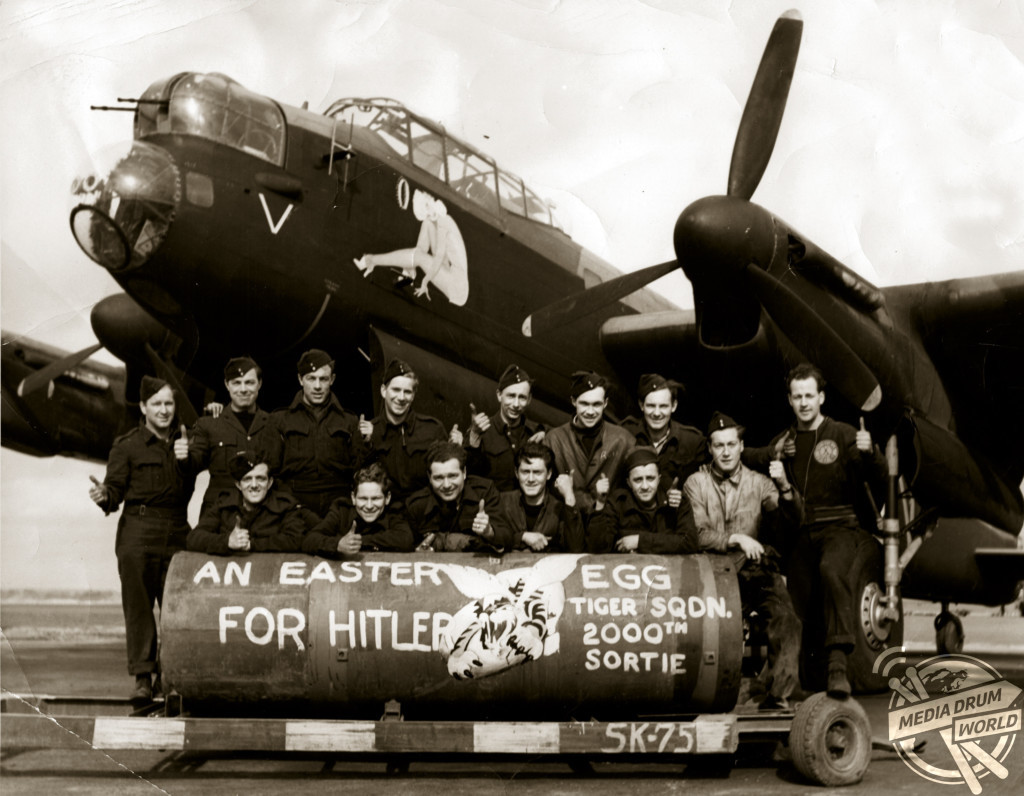
By Rebecca Drew
INCREDIBLE black and white images of the famous WW2 Lancaster bomber which was central to the RAF’s bombing campaigns on Nazi Germany have been revealed in a new book documenting its history and crew.
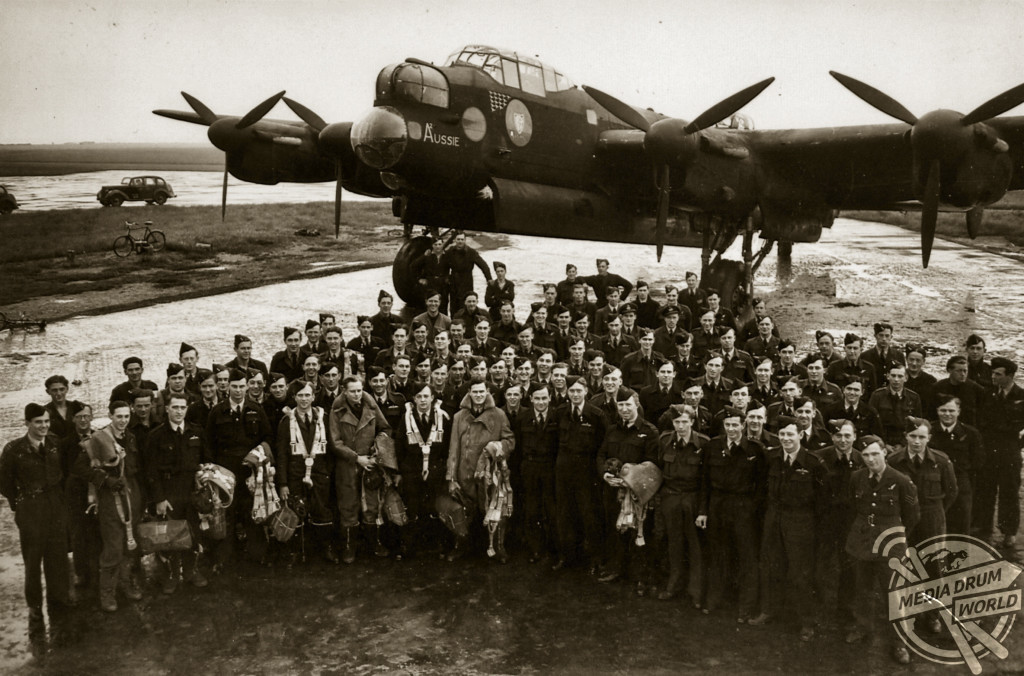
The stunning photographs tell the story of the plane and its crews and show the No. 460 Squadron standing proudly in front of a Lancaster called Aussie and the No.419 Squadron RCAF Lancaster at RAF Middleton St George working on the plane with parts scattered on the ground.
Other photos show the devastation to the Krupp works in Essen, Germany that was completely destroyed by bomber command raids.
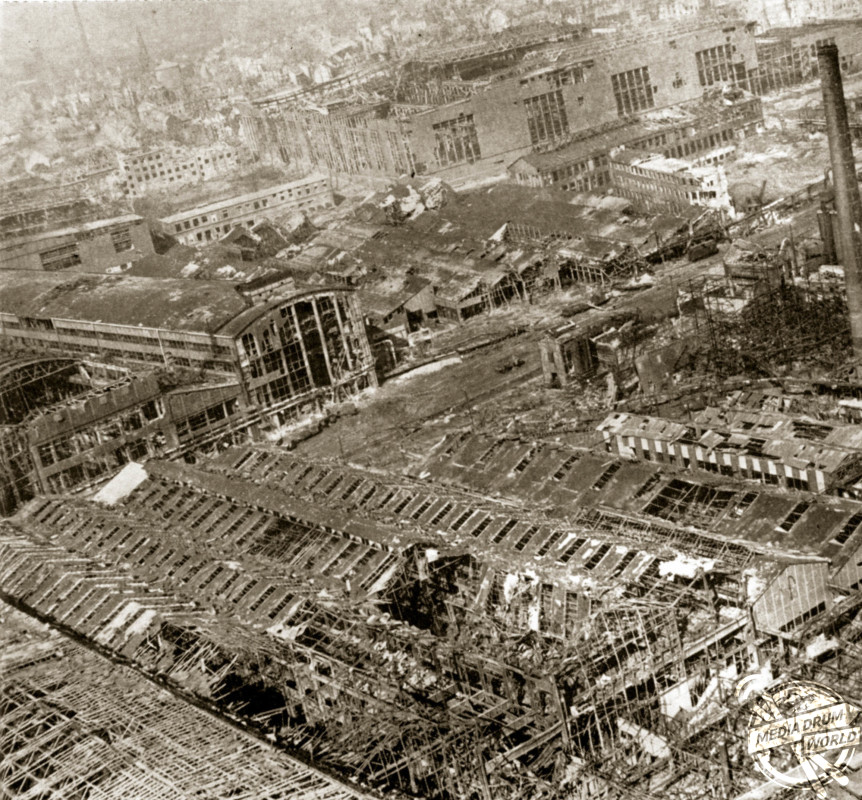
The fascinating photographs have been revealed in the book, The Lancaster by retired military and commercial pilot, Gordon A. A. Wilson and is published by Amberley Publishing.
“The Avro Lancaster is a four-engine, all-metal, mid-wing cantilever monoplane with an oval-shaped fuselage, the wide tail section has twin elliptical fins and rudders. It was initially powered by four wing-mounted twelve-cylinder Merlin engines with three-bladed propellers” said Gordon in the book.
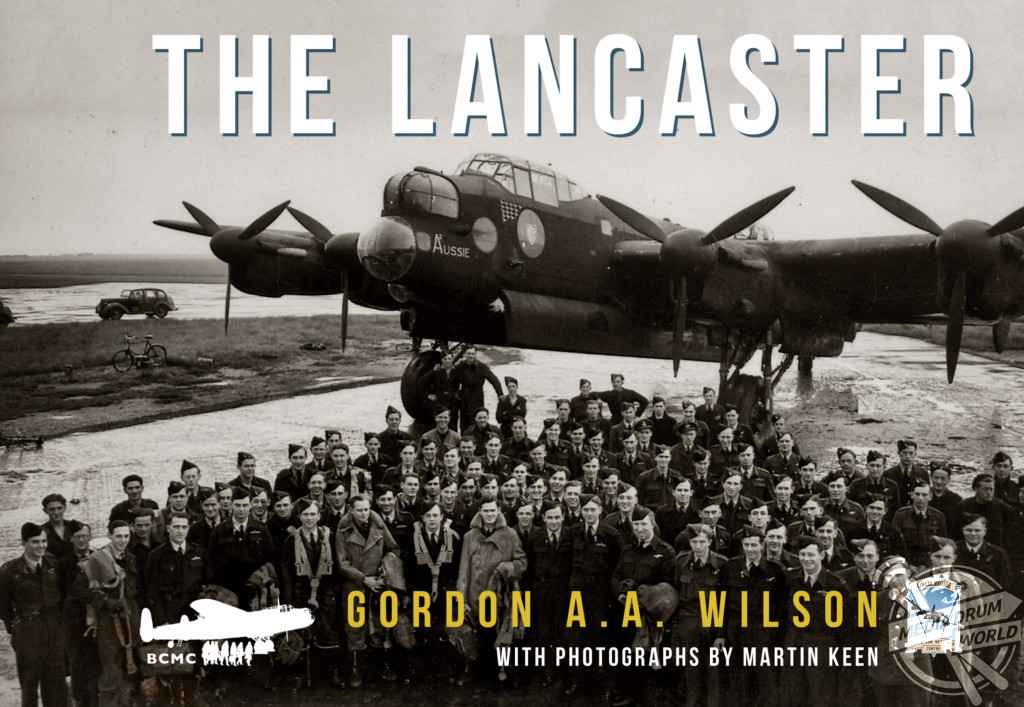
“The propellers were originally ‘needle blade’, switching later to Hamilton Standard ‘paddle blade’ type. It has two main landing gears (undercarriage) that retract hydraulically rearward into the inner-engine nacelles, and a non-retractable tailwheel.
“The cockpit has a distinct greenhouse look, with the forward gun turret and bomb aimer’s bubble making up the nose of the aircraft.”

The seven-man Lancaster crew consisted of a pilot, bomb aimer or nose gunner, wireless operator, flight engineer, navigator and mid-upper and rear gunners.
The book focusses on the four most complete Lancasters including the only two flying planes in the world, the PA474 and FM213 and the two ground-running planes which are the NX611 and FM159.
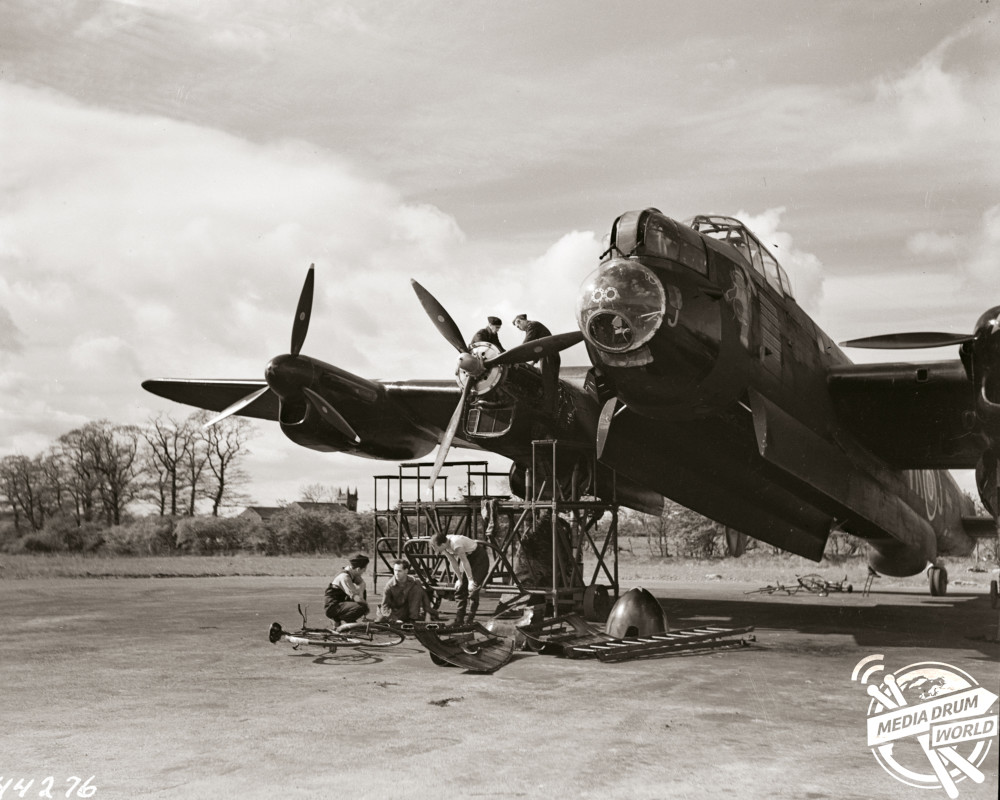
“The wartime Lancaster had a crew of seven,” added Gordon.
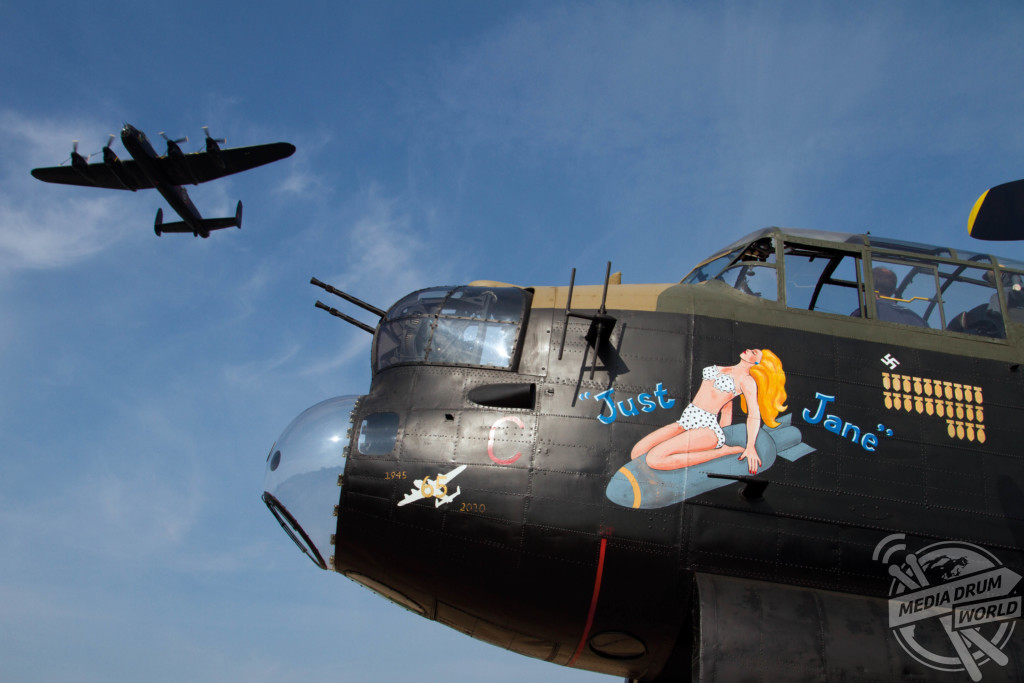
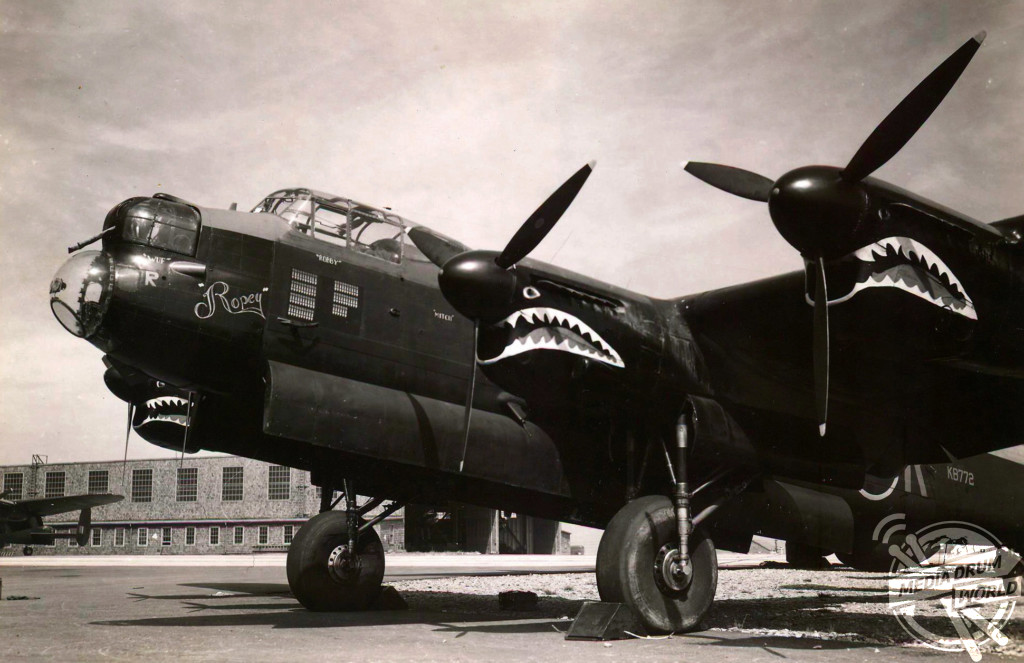
“The crew bonding and team spirit of the seven-member crew during wartime was never forgotten and, at the many reunions over the years, those remaining always toasted those crew members that had passed away with the words, ‘We will remember them.’”
